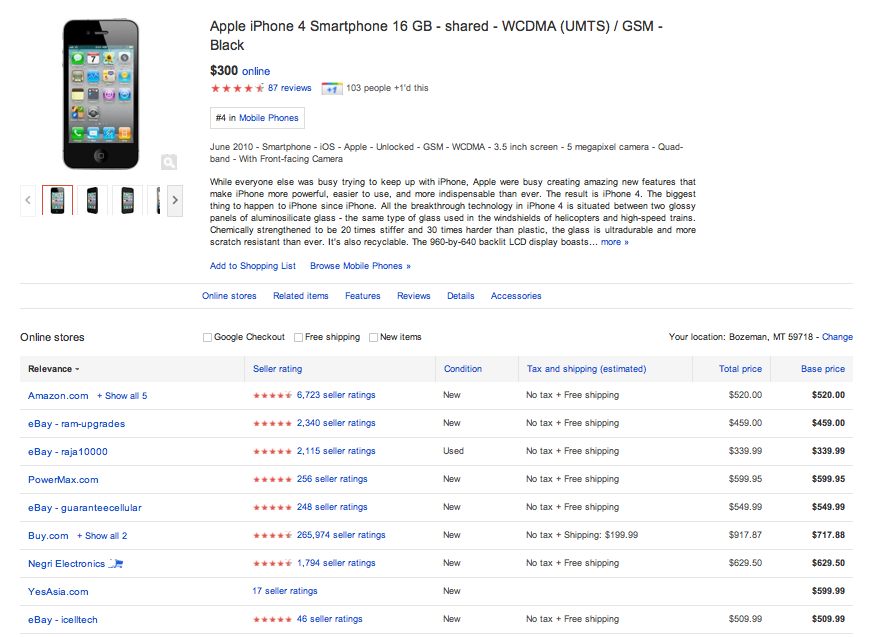Branding vs. Price on the Web
The lazy marketer would take this case study and strongly recommend going for a very low price point and make up profit with a large sales volume through big box distribution channels. But remember the web removes price as a competitive advantage. There will always be a substitute or cheaper brand willing to prostitute themselves out and they are just a Google search away for our customer. As the picture shows, there are 48 stores willing to sell an iPhone 4s.
However, this approach may indeed work. For awhile that is. Eventually, the web will catch up and our product will be knocked off by another manufacturer or offered online at a cheaper price. This we can be guaranteed if we have any success in the market. Now, it becomes a nuclear arms race to the bottom price point. Brand and all the emotional benefits around it are thrown to the wind in the race to maintain sales volume and undercut competitors.
With large sales volumes comes tremendous marketing challenges. How do you control and provide value in the customer experience? You don’t anymore because it quickly becomes about marketing just meeting sales objectives. The price has to be kept low to compete, which means little resources for making interacting with the brand a remarkable experience. The stressed digital marketer stares on as nasty comments rack up on the company blog. Google Reviews and Yelp explode with one star reviews. Customer reviews pile up with vicious feedback on Amazon. Niche bloggers in the space quickly pounce.
And those Big Box distribution channels? Well, they also have user reviews as well and since the quality and experience is so low, it is reflected with poor 3rd party feedback. Sales stall in these distribution channels. About this time, a competitor enters the market with a lower price point and a fresh slate in the minds of customers (though they will end in the same position shortly as well).
Finally, the almighty Google indexes all this venomous content. So, those great keywords that we used to rank for, in addition to our brand name are now polluted with the crowds’ angry experiences. The first page results quickly show how poor our product and brand is. There is nowhere to hide now. We would be better off scraping the brand and starting it over.
While starting initially strong with tremendous sales volume, the company sputters to a stop.
The old model where the consumer had no voice and the crowd could not assemble for or against a brand ensured that consumers were largely in the dark. There was no quick and easy way to see if a product or company was great. We had blind trust and often times were disappointed. But as we saw with global companies like Dell and United Airlines, the consumer is in control today.
Key takeaway: The feedback loop for brands today is real-time. There is no delay in people talking about their experience and doing it in creative or destructive ways.





